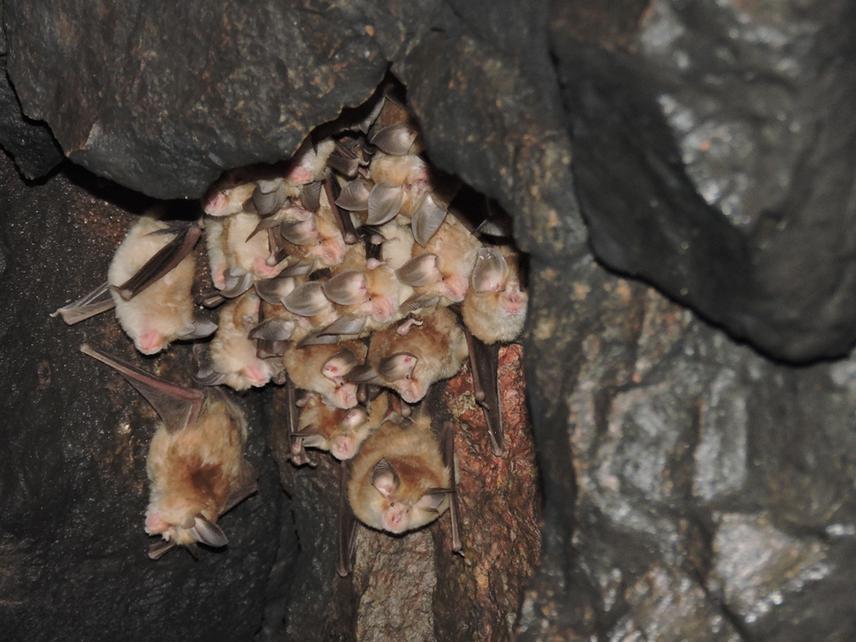Heliana Dundarova
Other projects
The project is aimed at surveying underground habitats and clarifying the important summer and winter bat sites in south-western Kyrgyzstan. Collected information will be used to evaluate the vulnerable bat communities and will serve as a basis to recommend and implement a specific conservation strategy in the country. In addition, the educational aspect of the project will contribute to the establishment of a local bat working group. The group will help to achieve favourable future for the long-term conservation in the region.

A breeding colony of Rhinolophus lepidus in the small mine of Fersman cave.
The south-western part of Kyrgyzstan is a transboundary territory situated between Tajikistan and Uzbekistan. The region is mountainous with karst relief and encloses the southern wall of Fergana Valley. These characteristics suggest a variety of underground habitats which play an important role for bat communities.
The life cycle of the cave-dwelling bat species is closely related to the underground sites. Moreover, they form nursery colonies in the summer, which have high conservation priority. The conservation significance also applies to the winter hibernacula, where caves are shelters not only for the cave-dwelling but also for forest-dwelling species. The illegal entry into the caves for entertainment or treasure-hunting/mining activity in the region is one of the main threats for bats. The impact of these unregulated practices is high mortality rate for the new-born bats in the summer and lethal impact on the bat aggregations in the winter. In this regard, summer and winter monitoring will contribute towards taking adequate measures for protection of the vulnerable bat communities and serve as a prerequisite to form the basis for a bat conservation framework in the region.
The educational aspect will be held in high priority during the project, and a local bat group comprised mainly of students will be established. They will pass series of lectures about bats, including species identification, morphology, anatomy, ecology, and conservation importance, combined with practice on the field. Training for safe access to the caves for the involved student will be provided before the main fieldwork and combined with practical activities during the project duration.
The project is a pilot study for the transboundary territories of central Asia and is essential for future, more thorough, research on bats.